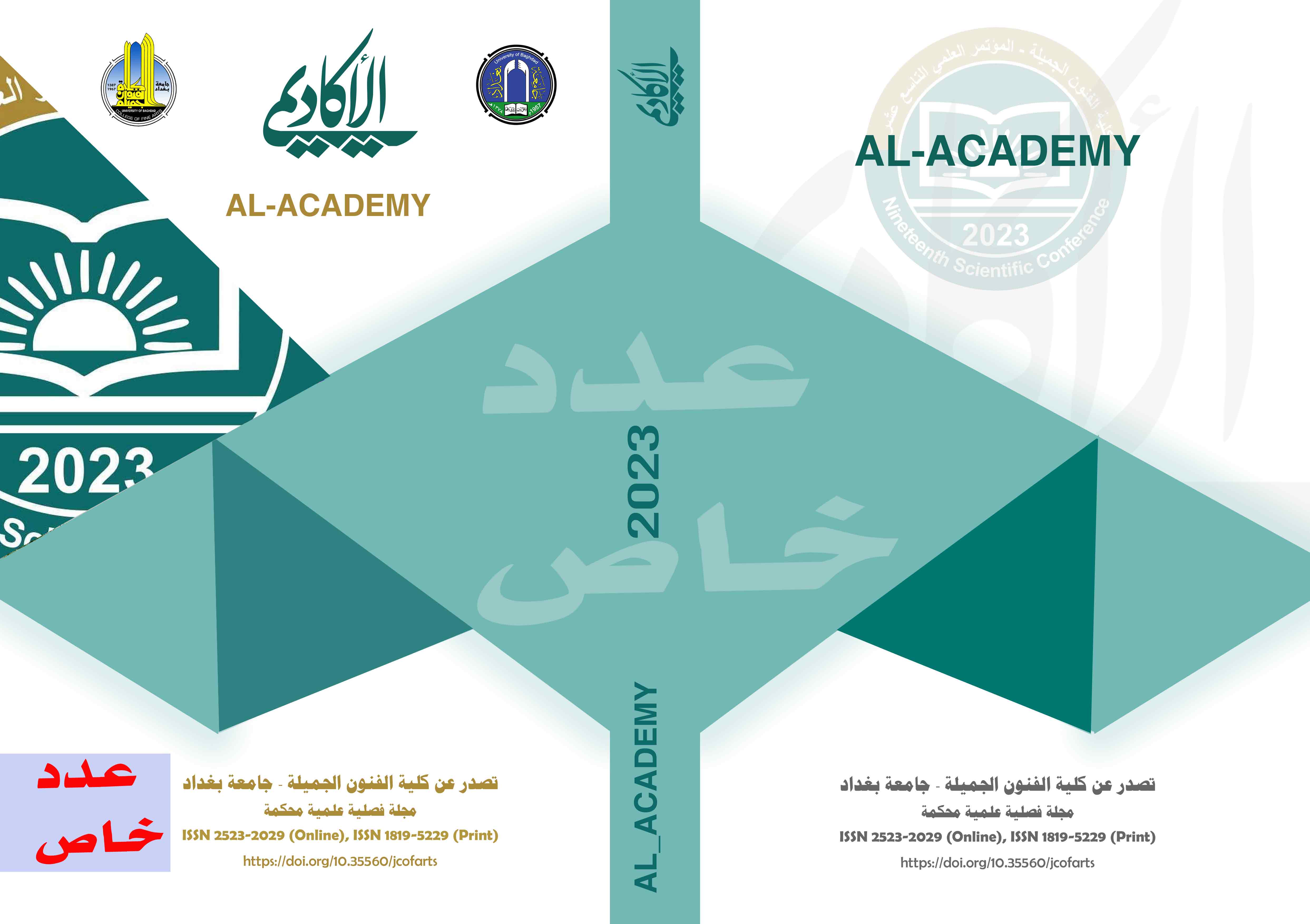The aesthetic effect of vocal recitation in building the theatrical image
DOI:
https://doi.org/10.35560/jcofarts1253Keywords:
impact, recitation, theatrical imageAbstract
Between the duality of sound and image, the completeness of the actor’s personality at the director comes to announce the birth of the appropriate theatrical role for that character as the basic and inherent element of the artwork, within his working system in the pattern of vocal behavior as well as motor/signal behavior as he searches for aesthetic and skill proficiency at the same time.
This is done through the viewer’s relationship with the theatrical event, which the director considers as an area of active creative activity in relation to (the work of the actor) through vocal recitation and the signs it broadcasts in order to fulfill the requirements of the dramatic situation and what it requires of a visual vision drawn in the form of an integrated and clear artistic image of the role with a collective understanding. Therefore, the actor had to master the art of speaking just as he mastered his control of movements and gestures, as well as recitation, chanting, screams and singing accompanied by music.
Therefore, this research came to address this study through two important topics, namely:
First: the concept of recitation and the study of its theatrical methods.
Second: Directorial treatments for diction in building the theatrical image.
Through them, the researcher reached several important results that highlighted the most important aesthetic aspects of the theatrical discourse, which the director dealt with in order to fit and harmonize between the vocal aspect and the visual aspect of the theatrical performance.
Including: First: The recitation is the extension of the sound in the place, and the artistic expanse it carries that plays the informative mediator between the ideas, desires and motives that the director works to achieve, to produce his dramatic images with different interpretations.
And secondly: - The aesthetic effect of vocal recitation in the artwork is represented as a tool for transforming the manifestations of the show and contributing to its visual construction, leading to a social reading that allows decoding the symbols and codes of the theatrical show.
Third: - These skills have theoretical foundations and rules that contribute to the completion of the actor who proceeds to continue training on them permanently
References
Abdel-Hamid, S., & Farid, B. H. (1980). Methods of Teaching Recitation. Baghdad: Dar Al-Maarifa.
Adass, M. A. (2007). The Art of Recitation. Jordan: Dar Al-Fikr.
Ardash, S. (1979). Director in Contemporary Theatre. Kuwait: The National House for Culture, Arts and Letters.
Aristotle. (1982). The Art of Poetry. (I. Hamada, Trans.) Cairo: The Anglo-Egyptian Bookshop.
Brecht, B. (1973). The Theory of Epic Theatre. (J. N. Al-Tikriti, Trans.) Baghdad: Dar Al-Hurriya Press.
Krotowski, J. (1986). Towards a Poor Theatre. (K. Q. Nader, Trans.) Baghdad: House of General Cultural Affairs.
Mustafa, M. (2006). Preparation of the Actor or Preparation of the Spectator (1 ed.). Beirut: Dar Al-Farabi.
Qajah, J. (2006). Theatrical Schools and Methods of Directing them from the Greeks to the Present Era (1 ed.). Damascus: Nour for Printing, Publishing and Studies.
Stanislavsky, K. (1973). Prepared by the actor. (M. Z. al-Ashmawy, Trans.) Cairo: Dar Nahdat Misr for printing and publishing.
Strasberg's, S. L. (2002). Method for Training the Actor (2 ed.). (A. Sakhsukh, Trans.) Cairo: The Egyptian General Book Organization.














